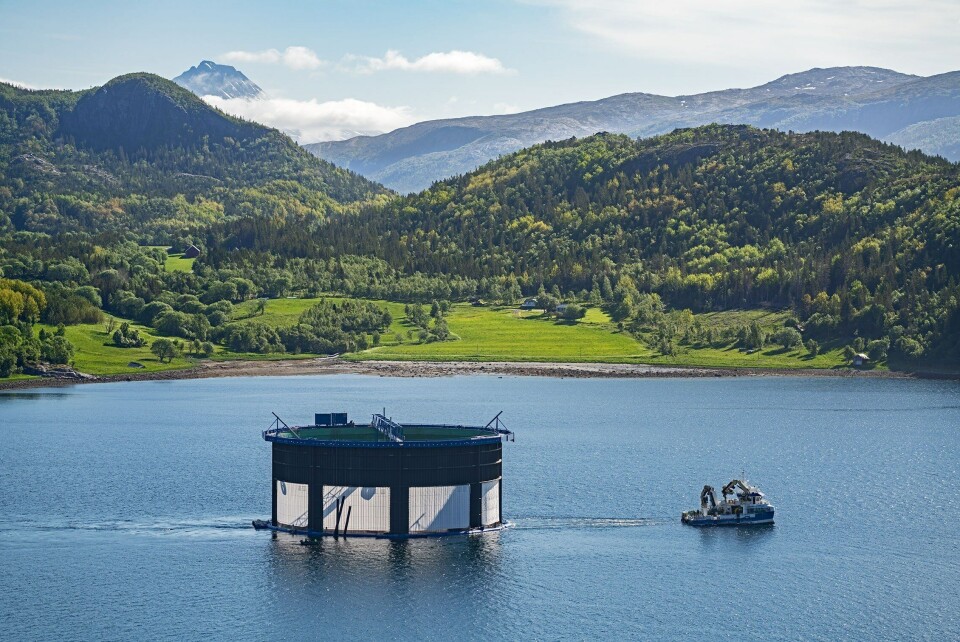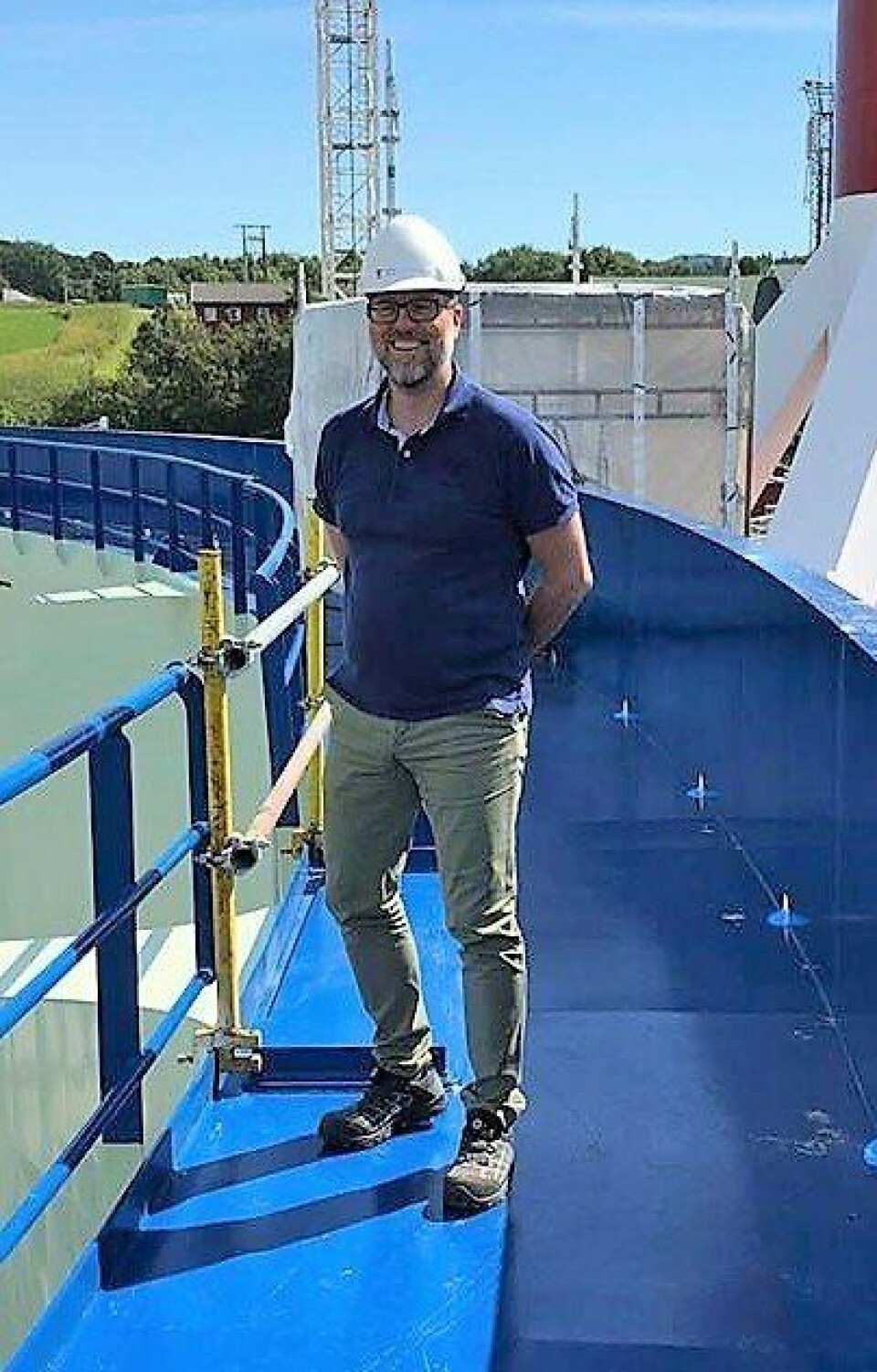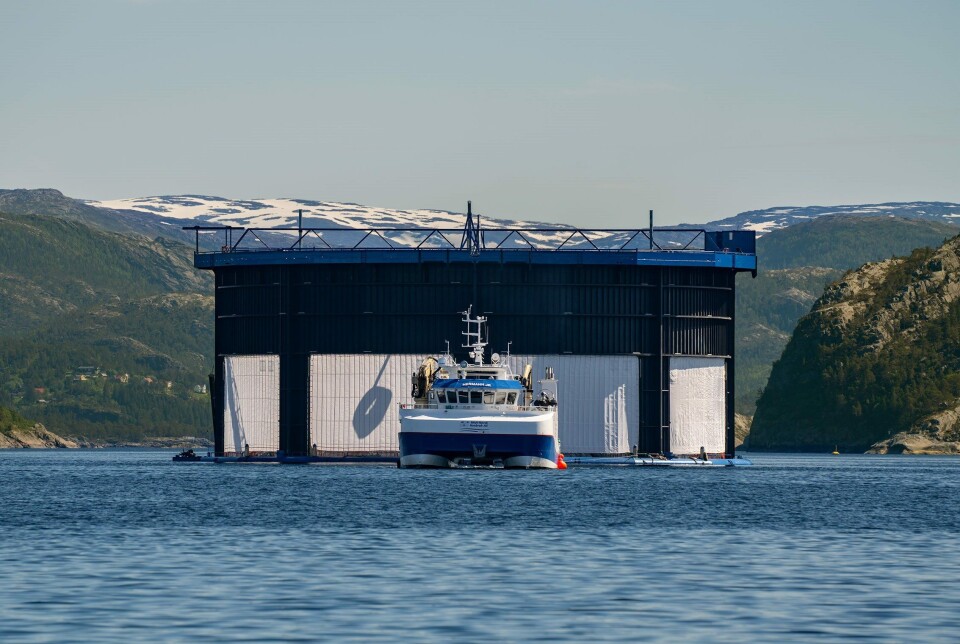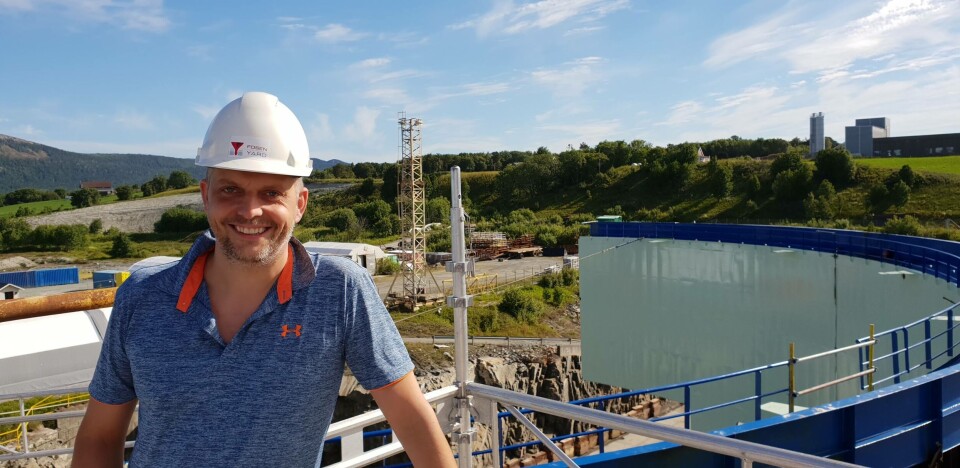
Aquatraz given deeper lice skirt and better water flow
The makers of the “Aquatraz” salmon cage in Norway have substantially increased the depth of its lice shield from eight to 18 metres for the third-generation cage, and plan to make it even deeper for the fourth and final iteration.
A dense fabric has also been installed on the bottom of the G3 cage, extending three metres in from each side along the bottom net.
Taken together, these two changes contribute to an improved internal water circulation and an increase in the proportion of deep water that is taken into the cage. This will provide better fish health and a further reduction in lice pressure.

300,000 salmon
Steingrim Holm, project manager at salmon farmer and Aquatraz developer Midt-Norsk Havbruk, told Fish Farming Expert’s Norwegian sister site, Kyst.no, that the G3 Aquatraz was put into operation on June 26 at the Årsetfjorden site in Nærøysund municipality.
“Three hundred thousand salmon with an average weight of approximately 0.6 kg were transferred to the Aquatraz cage. In addition, we have a conventional control cage, at the same location, with approximately 150,000 salmon from the same smolt group. The purpose is to compare how the production in Aquatraz is in relation to conventional production,” said Holm.
Higher flow rate
The fish are scheduled to be harvested during May 2021.
“So far, the operation of the Aquatraz cage in Årsetfjorden has worked very well. Both temperature and salinity measurements show that we’re taking in water from a depth of about 20 metres, which is good with regard to lice pressure,” Holm explained.
“In addition, it seems that the salmon prefer to stay in the extended area of the cage with a higher flow rate.”

Deeper lice skirt
Holm said experience from the first and second generation Aquatraz has shown that 8m lice skirts help to reduce lice pressure, but that this depth is not sufficient to eliminate it.
“As a result of these experiences, the depth of the skirt in the third generation Aquatraz has increased to 18m,” said the project manager.
“In addition, changes have been made to the bottom that improve the water circulation in the cage, but this has been done in terms of growth and well-being. It is still too early to conclude that an 18m deep lice skirt is optimal and that the new geometry provides the best flow picture.”
Lower temperature
The experiences from the release in Aquatraz in Årsetfjorden so far show the following:
- No lice after 1½ months in operation
- Measurements show that water is fetched from approximately 20m depth (this corresponds with analyses carried out by the company)
- Smoother and lower temperature, as well as higher salinity in the Aquatraz cage than in the control cage
- Larger and more uniform volume of water circulating around the cage (desired situation to improve trimming of the salmon)
- Larger water exchange than for the first and second generation Aquatraz
With the third generation (cage no. 4), the company wants to clarify whether an 18m deep lice skirt is sufficient to keep lice levels so low that de-lousing is unnecessary.
Optimal conditions
“Furthermore, we want to get an answer on whether the changes we have made with current pumps (increased power) and the net bottom give the desired effect with regard to water replacement and flow picture in the cage and as part of this check that the analyses are in full scale,” said Holm.
“It is also an objective to clarify whether the high water exchange and rapid water circulation in the cage gives the salmon optimal conditions that result in top quality at a competitive price, improved fish health, fish welfare and workers’ health and safety in relation to production in conventional cages.”
Midt-Norsk Havbruk has developed the cage with technology provider Seafarming Systems, and the companies are now working on the fourth generation of Aquatraz, which will be informed by the experiences with the current G3 cage.

Easier cleaning
Seafarming Systems project manager Alf Reidar Sandstad said that for the Aquatraz G4, an even deeper skirt of about 25 metres is planned. Furthermore, the bottom net and side panel have been replaced with a steel / glass reinforced plastic grille. This provides increased service life and easier cleaning and disinfection. In addition, additional safety against escape is achieved.
Unlike previous generations, G4 can divide the farming volume into adjustable sections, like pieces of cake.
“This enables the delivery of fish without raising the cage,” said Sandstad.
“The division also provides opportunities for sorting fish as well as batch starvation and delivery of fish.
“During the work with G4, it has also been important to focus on operating operations. In the first generations, the main focus was on the fish, but for G4, which is to be a commercial cage, it is important that everything is automated in most operations. Therefore, greater flexibility in production has had increased focus.”























































